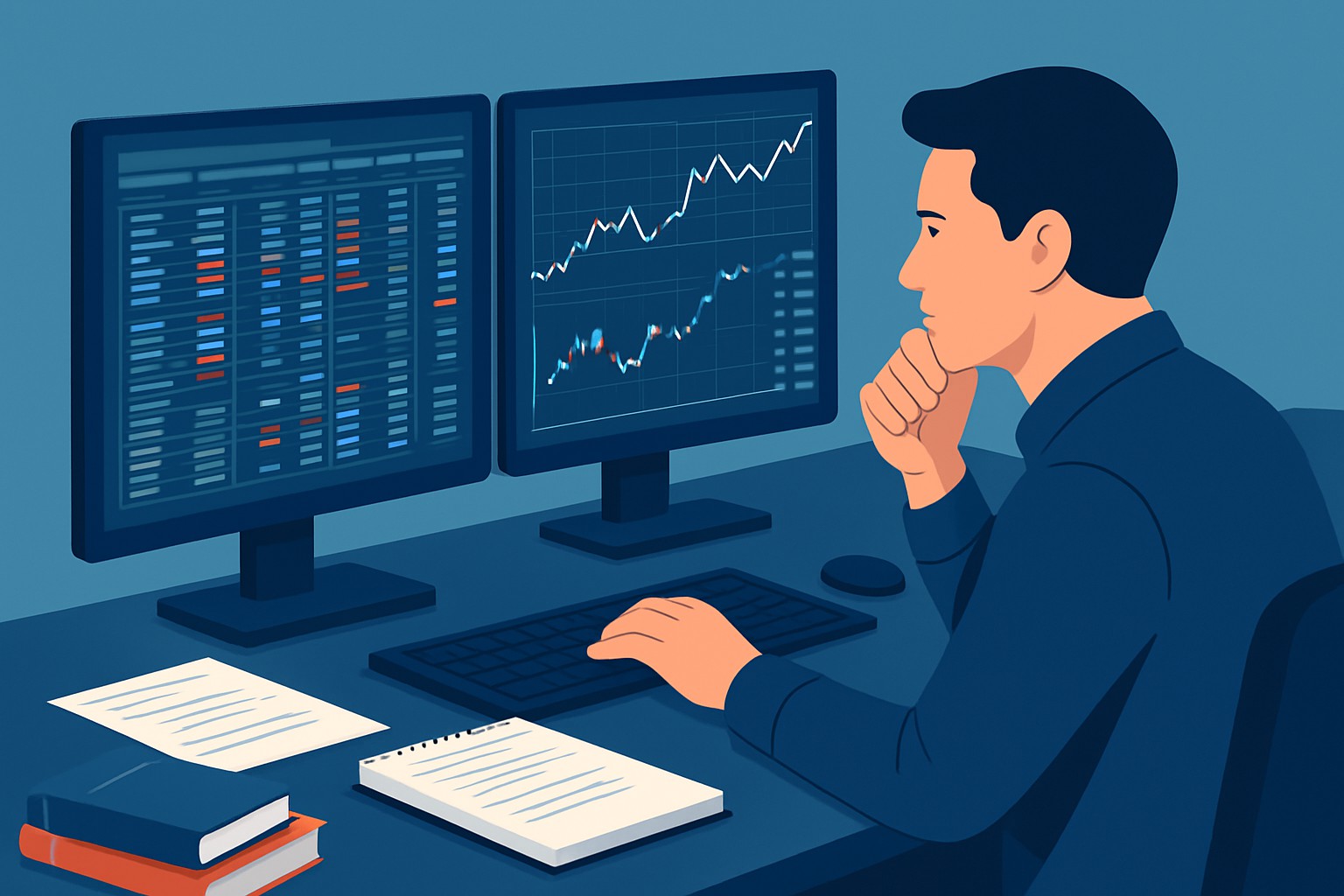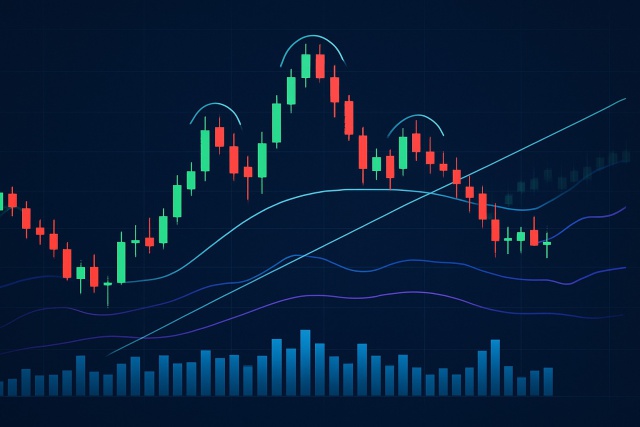
How trading options on futures works?
Explore how trading options on futures can diversify your portfolio and manage risk with leverage. T...

Futures options trading is a powerful yet often misunderstood financial tool that blends the best of both worlds: futures contracts and options. This article breaks down how futures options actually work using clear, no-nonsense language that anyone—whether you are just starting out or have been around the trading block a few times—can grasp.
A futures option is a contract where the underlying asset is a futures contract rather than a stock or other financial instrument. Unlike a futures contract that locks you into buying or selling an asset on a specific date, a futures option gives you the right—but not the obligation—to step into that contract if you choose.
Understanding the lifecycle of a futures option basically means keeping an eye on what both buyers and sellers get up to from the moment the option is snapped up until it either gets exercised or quietly expires. Buyers fork over a premium to grab the option and later weigh whether pulling the trigger makes sense given the market prices. Meanwhile, sellers pocket these premiums but have to hold up their end of the bargain if the buyer decides to actually exercise their rights.
A trader picks a futures option based on their market outlook and just how much risk they are comfortable taking on.
The buyer ponys up a premium right from the start to lock in the option's rights.
Over the option's lifetime, its value wiggles up and down along with the underlying futures price.
The buyer can either exercise the option when it makes sense or sell it off before the expiration date sneaks up.
When exercised, the option flips into a futures contract at the strike price everyone agreed on.
If the option goes unused, it simply expires worthless—leaving the buyer's loss capped at that initial premium paid.
The price or premium of a futures option hinges on a number of interconnected factors. Intrinsic value reveals the immediate profit you would pocket if you cashed it in right this second, while time value reflects the potential for future gains before the clock runs out. Market volatility and interest rates play a key role too, shaping the likelihood of favorable price swings and the cost of keeping those positions alive over time.
Options are grouped by their "moneyness," which is a handy way to gauge how profitable they might be compared to the underlying futures price. A call option is considered "in-the-money" (ITM) when its strike price is below the current futures price. This usually means exercising it results in an immediate gain, like hitting a small jackpot. Conversely, a put option is ITM when its strike price is above the futures price. There are also "at-the-money" (ATM) options where the strike price stays close to the current futures price. These often have the highest time value, making them quite appealing. "Out-of-the-money" (OTM) options would not turn a profit if exercised right now, but do not count them out just yet because they can still pack some punch if market conditions shift before expiration.
| Option Type | Definition | Example Scenario | Payoff Potential |
|---|---|---|---|
| In-the-Money | An option where the strike price is playing nicely in your corner compared to the current futures price | Imagine a call option with a $50 strike when the futures price is sitting at $55 | Packs immediate intrinsic value and tends to fetch a higher premium right off the bat |
| At-the-Money | Strike price pretty much lines up with the current futures price | Think of a put option and futures both hovering around $70 | Mostly carries time value and keeps the door open for some speculative upside |
| Out-of-the-Money | Strike price isn’t quite on your side compared to the current futures price | Picture a call option with a $40 strike when the futures price is $35 | Doesn’t have intrinsic value; the premium mainly reflects the hope for price movement |
Futures options offer traders a flexible toolkit to manage risk or speculate and generate extra income. They’re often the go-to choice for hedging against unfavorable price swings or getting more bang for your buck with capital. Some traders like to write options to pocket premiums while others take positions that cleverly cap their risk when betting on price moves.
Picture a trader feeling optimistic about crude oil futures currently tagged at $70 per barrel. They decide to snag a call option with a strike price of $75 and pay a $2 premium. If the price of oil jumps above $77—that’s the strike plus the premium—they stand to make nice gains by exercising the option or selling it off. Meanwhile, a portfolio manager uneasy about a potential drop in the stock index might buy put options as a safety net. If the index dives below the strike price, those puts gain value and help cushion the portfolio's blow.
When someone exercises a futures option they’re essentially jumping into the underlying futures contract at the pre-set strike price. Settlement could involve handing over the actual asset but more often it’s cash-based — a straightforward reflection of the price difference. The option writer or seller has to step up and take on the futures position if assigned.
Exercising a futures option throws open the door to a brand-new position in the underlying market. It’s like stepping off the sidelines—you go from merely holding an option to taking on an actual obligation that can seriously steer the course of your trading journey.
Many traders often mix up futures options with actual futures contracts and mistakenly think they carry the same risks and obligations. Some see futures options as too complicated or assume they always carry more risk than futures trading. There are also plenty of myths about margin requirements, how expiration dates work and what premiums really mean.
If you are just dipping your toes into futures options trading, it’s really best to build a solid foundation and take your time—no need to rush in headfirst. Opening an account with a broker that actually supports futures options is essential, because not all brokers play nice with them. Wrapping your head around the contract details and understanding how the underlying futures tick is absolutely key. I’ve found that using paper trading or simulated accounts is a fantastic way to get some hands-on experience without ever risking a dime.
Struggling to improve your trading performance? Edgewonk's advanced analytics tools are designed to give you the edge you need.
With detailed trade journaling, robust strategy analysis, and psychological insights, you'll gain a comprehensive understanding of your strengths and weaknesses. Don't miss out on this game-changing opportunity.
Traders, it's time to elevate your game. Edgewonk is the ultimate trading journal software designed to empower you with data-driven insights and personalized strategies. Take control of your trading journey and maximize your potential.
17 posts written
Driven by her passion for empowering individual traders, Annika Eriksson is a renowned educator, offering practical strategies and actionable insights for successful trading.
Read Articles
Explore how trading options on futures can diversify your portfolio and manage risk with leverage. T...

Unlock the profit potential of commodity options with this comprehensive guide featuring essential s...

Unlock the power of the head and shoulders pattern with this complete guide. Learn to spot, trade, a...

Discover what IOUs mean in finance, their role as informal debt acknowledgments, and how understandi...
